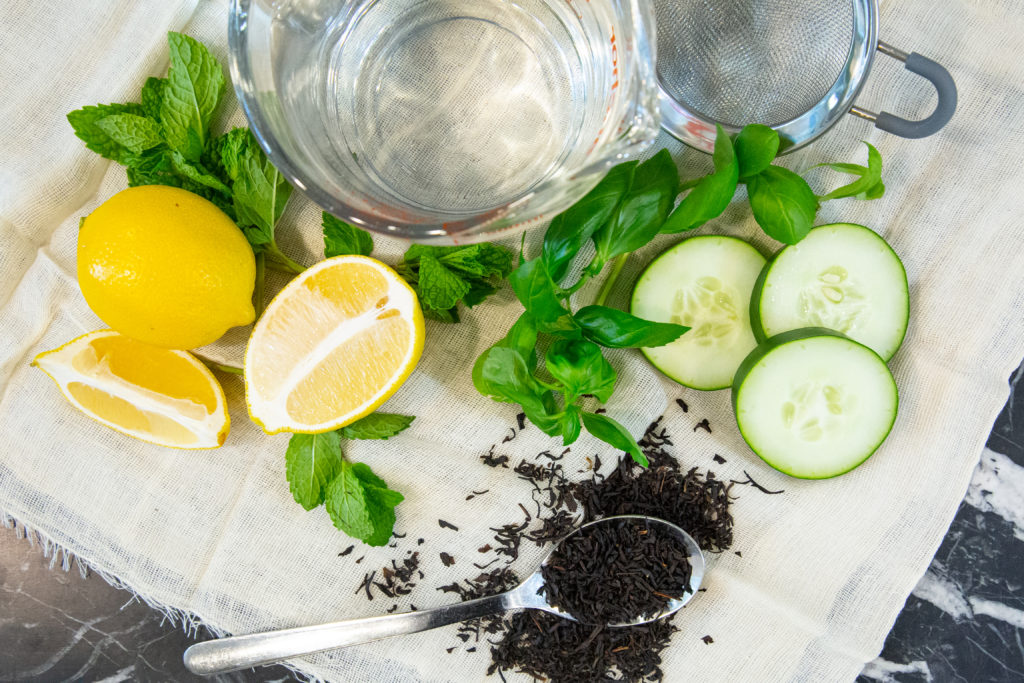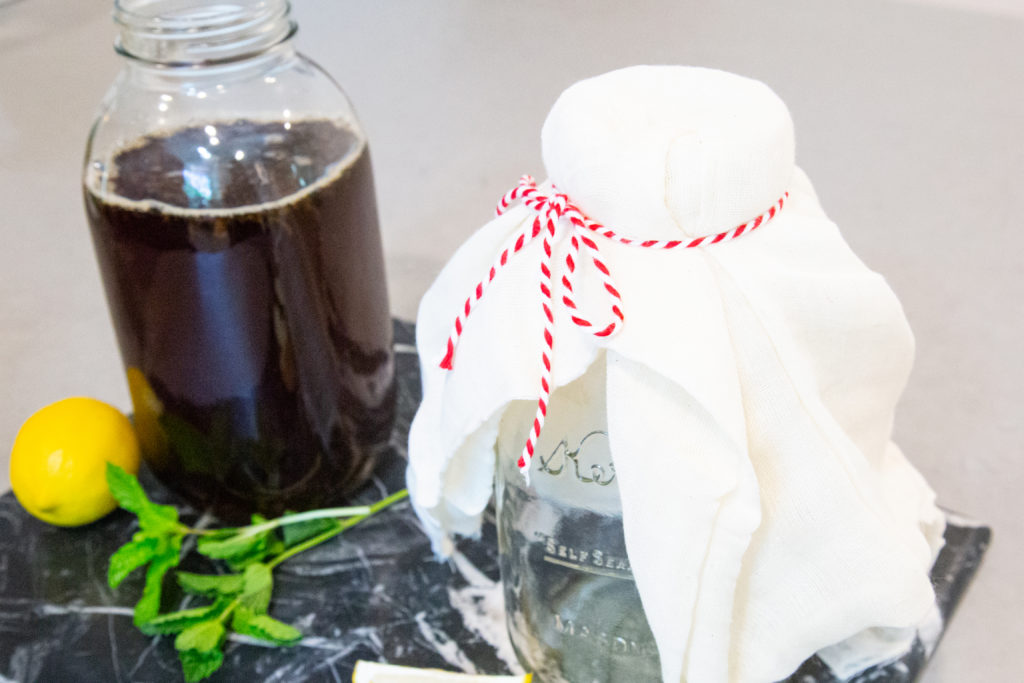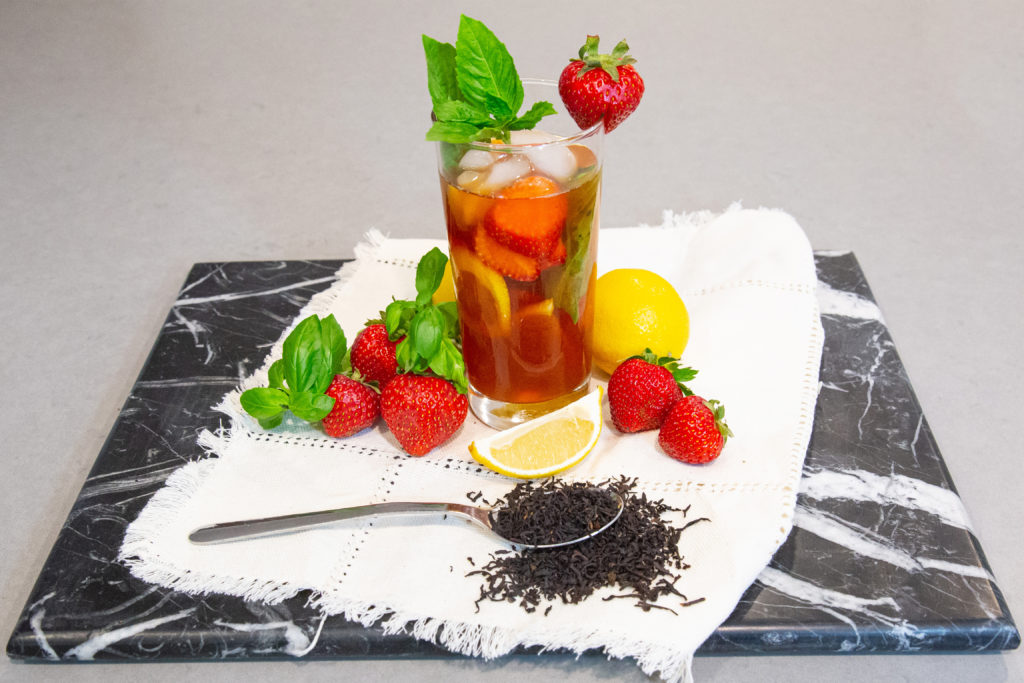Why You Need to Start Making Cold Brew Iced Tea
It’s a tradition that marks the start of summer: a glass jug filled with water and Lipton tea bags left in the sun to slowly brew delicious iced tea. But while sun-brewed tea will forever conjure nostalgic images of summertime, if you are in search of the perfect warm-weather refresher, then it is time you try cold brew iced tea. Cold brew iced tea is smoother and sweeter than hot or sun-brewed tea. That’s not an opinion—the science backs it up. When dry tea leaves steep in hot water, water molecules are energized and rapidly agitate the leaves, causing flavor molecules to dissolve more quickly. This can draw more bitter tannins out of the tea leaves. Cold water, on the other hand, slows the process, and the result is a deliciously smooth cup of tea.
You only need three ingredients to make a perfect cup of cold brew iced tea: tea leaves, water, and patience. The third ingredient is key. Cold brewing tea can take anywhere from six to 12 hours, depending on the tea varietal you choose. But once you try it, you’ll find that the results are worth it. Soon, you’ll have your own cold brew tea technique down and on rotation.
Getting Started
Deciding the type of tea you want to make is the most important decision when preparing to make cold brew tea. Traditional tea brands such as Lipton work fine, but you may also want to try out some different flavors such as oolong or white tea. The important thing to keep in mind is that different tea varietals will require different steeping times. White or green teas should steep for six to eight hours. Black or oolong teas are strong and will require a longer steeping time—around eight to 12 hours—to draw out all the flavor.

Equipment
Tea: Most recipes recommend loose tea, which is generally higher quality than tea that comes in bags. If you are using tea bags, you may have the best results by cutting the bags and allowing the tea to steep loose (don’t worry, we’ll strain it later.)
Water: The better the water quality, the better the tea. Cool filtered water is best.
Containers: Any large container with a lid will work fine, though glass jars are preferred. Plastic can leach unwanted flavors (and other nasty things) into your tea. Also, find a container that suits the quantity of tea you need. Since it can take upward of 12 hours to brew a replacement batch, you want to make sure you don’t run out midsip. Many avid cold brew tea drinkers also use multiple containers, so they continue brewing on rotation to ensure a steady supply.
Straining: A regular kitchen sieve will work well when straining the tea after steeping. For best results, add a layer of cheesecloth to the sieve when straining.

Steps
- Combine the tea and filtered water. If you are using loose-leaf tea, a good ratio is 1 teaspoon of tea for every 6 to 8 ounces of water. You may want to experiment with ratios for the first few batches to see how strong you like your cold brew iced tea.
- Variation: Add some lemon, mint, or cucumber to the brew for some natural sweetness and zest.
- Let the tea steep in the fridge for six to 12 hours, depending on the tea you use.
- Strain! Pour the tea through the cheesecloth and strainer into a storage vessel.
- Serve. You may find that the smooth and sweet natural flavors of cold brew iced tea don’t require any extra sweetener. But if you like your iced tea sweet, try using simple syrup or agave rather than sugar.
Shortcuts
If you are brewing in small batches, Cookie and Kate suggests using a French press, which can serve as both your steeping vessel and your strainer. Simply let your brew rest in the fridge, press, and serve.
Another small-batch, low-maintenance option is to use a cold brew coffee maker. These function similarly to a French press and are readily available in coffee shops and online.
Caffeine-Free Tea
Cold brew tea has less caffeine than hot steeped tea—another cold brew benefit for tea lovers who don’t like the occasional jittery aftereffects that come with tea. Slower steeping means less agitation and fewer caffeine molecules leaching over into the brew. But if you’re looking for a completely caffeine-free iced tea, simply use a tea varietal that doesn’t contain caffeine.

Expanding Your Cold Brew Iced Tea Palate
Cold brew iced tea blends well with other flavors. After you get your base tea brewing process down, try experimenting with some of these delicious concoctions:
Strawberry Basil Iced Tea
The organic coffee roaster Groundwork has a delicious spin on cold brew. When steeping black tea, add some strawberries, lemons, and basil for a sweet and savory finish:
- 4 cups cold water
- 4 teaspoons Iced Black Tea
- 1/2 cup sliced strawberries
- 1/2 lemon cut into thin slices
- Small handful basil leaves
Watermelon Iced Tea
Tasha’s Artisan Foods also has a recipe that blends sweet fruit and strong tea that tastes great on its own and will inspire you to experiment with a range of tea and fruit combinations. Steep tea and mint in water in the refrigerator for eight to 12 hours. Strain and mix in watermelon puree, simple syrup, and lemon. Garnish with mint and some frozen watermelon balls.
- 4 teaspoons broken orange pekoe tea/oolong
- 4 cups water, room temperature
- 4-5 mint leaves
- 2 cups watermelon pureed and strained
- Simple syrup or honey to taste simple syrup
- 1-2 tablespoons lemon juice (optional)
- Mint for garnish
- Frozen scoops of watermelon balls for garnish (optional)
Learn more about the history of tea and try some Texas-inspired variations.
© 2022 Texas Farm Bureau Insurance



